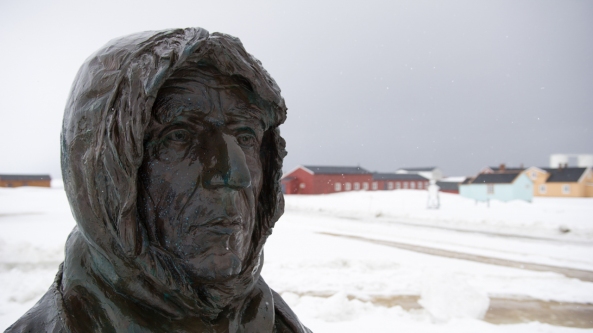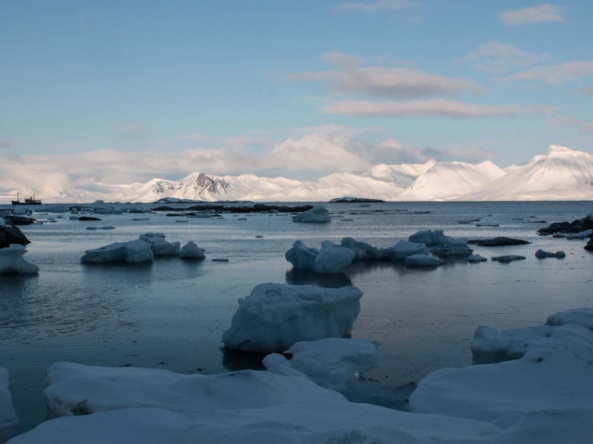Having sailed north overnight in relatively bumpy seas, we stopped at Ny Alesund, the scientific community on the southern shore of Kongsfjord that developed from the mining operation at Kings Bay after 1967. In 1926, Roald Amundsen and Umberto Nobile successfully piloted the airship “Norge” from Ny Alesund, over the North Pole to Alaska. In the same decade, three other attempts were made to overfly the North Pole from Ny Alesund, including that of Nobile, in 1928, aboard another airship called Italia, which crashed on the sea-ice with a loss of 8 crew members and several rescuers, including Roald Amundsen. From 1992, foreign countries were permitted to build research facilities at Ny Alesund, and today, is has a summer population of around 300 that dwindles to around 35 in winter.
We walked around the community, looked at the dog-kennel area, the old telegraph house and the bust of Roald Amundsen. The museum was being renovated, but it was possible to visit the shop, where post cards could be sent home stamped with the furthest north post mark in the world. We also walked out to the tower where Amundsen’s airship, Norge, had been tethered prior to its trans-polar flight.
We sailed north out of Kongsfjorden and were briefly exposed to the choppy seas of the previous night before entering the sheltered waters of Bjornfjorden and Smeerenburg. As we will soon be approaching the sea ice, we had a bear safety talk from Rupert, after dinner.


